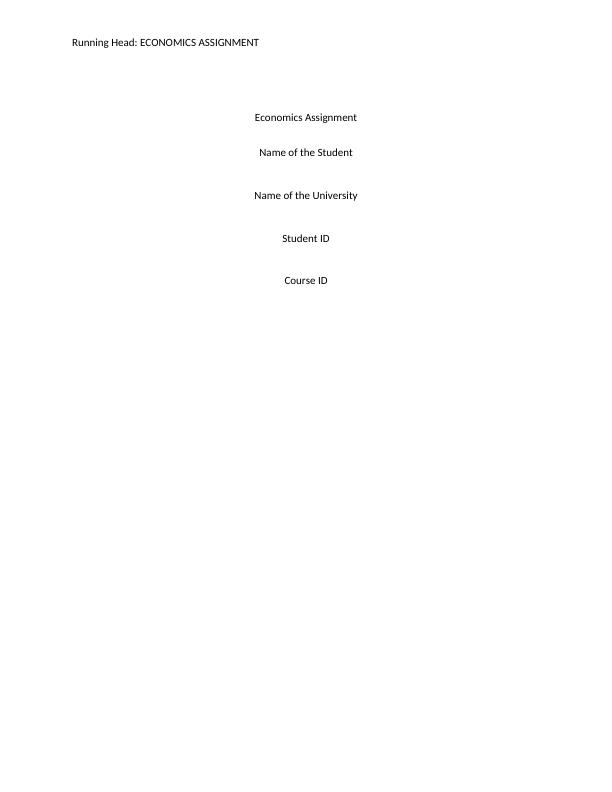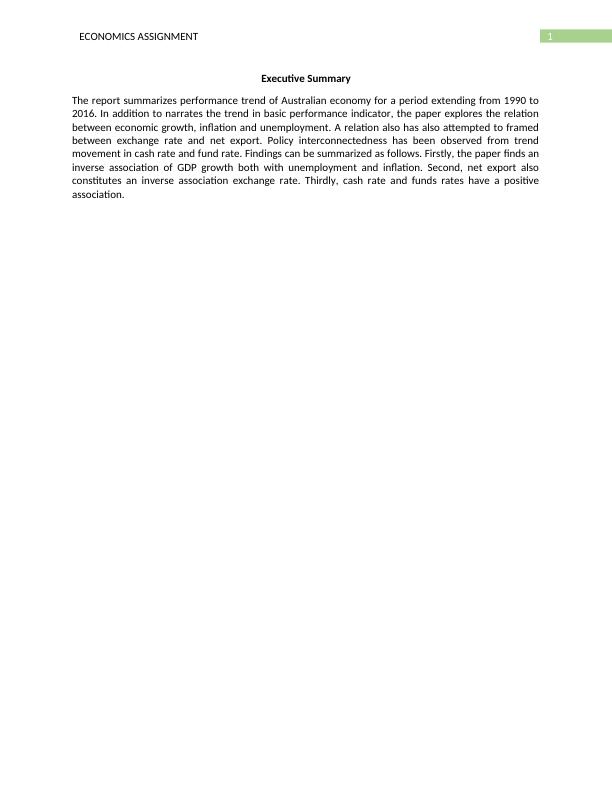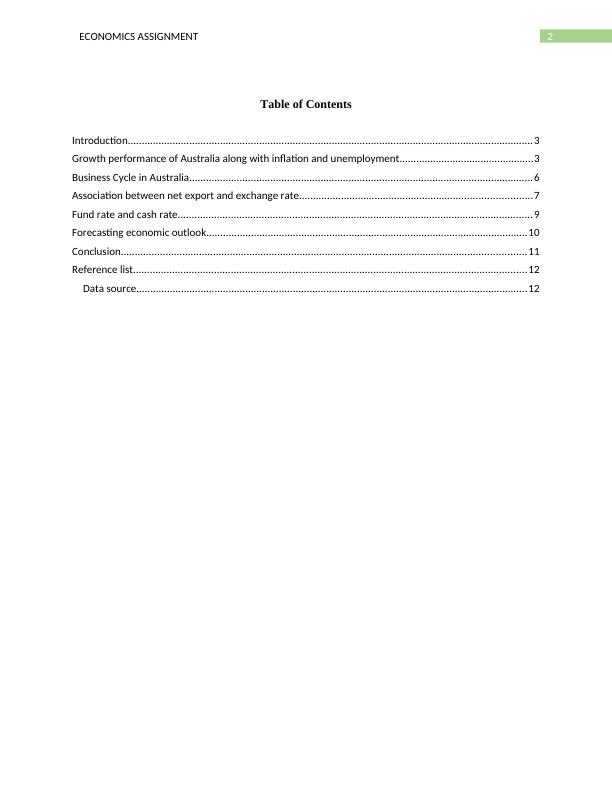Performance Trend of Australian Economy: Analysis of GDP Growth, Inflation, Unemployment, Net Export, and Exchange Rate
Research-based analysis and evaluation of the macroeconomic performance of Australia from 1990 to 2015/16, focusing on key indicators such as real GDP growth, interest rates, unemployment rate, consumer price index, exchange rates, and net exports.
14 Pages4385 Words276 Views
Added on 2023-06-11
About This Document
The report summarizes performance trend of Australian economy for a period extending from 1990 to 2016. In addition to narrates the trend in basic performance indicator, the paper explores the relation between economic growth, inflation and unemployment. A relation also has also attempted to framed between exchange rate and net export. Policy interconnectedness has been observed from trend movement in cash rate and fund rate.
Performance Trend of Australian Economy: Analysis of GDP Growth, Inflation, Unemployment, Net Export, and Exchange Rate
Research-based analysis and evaluation of the macroeconomic performance of Australia from 1990 to 2015/16, focusing on key indicators such as real GDP growth, interest rates, unemployment rate, consumer price index, exchange rates, and net exports.
Added on 2023-06-11
ShareRelated Documents
End of preview
Want to access all the pages? Upload your documents or become a member.
Macroeconomics Performance of Australia
|14
|4190
|34
Economics Development - Solved Assignment
|14
|3546
|38
Macroeconomic Performance of Australia from 1990 to 2016
|13
|3611
|62
Evaluation Of Macroeconomic Performance of Australia
|13
|3244
|47
Australian economy and its relation with USA
|11
|3532
|157
Macroeconomic Performance of Australia
|13
|3860
|298




